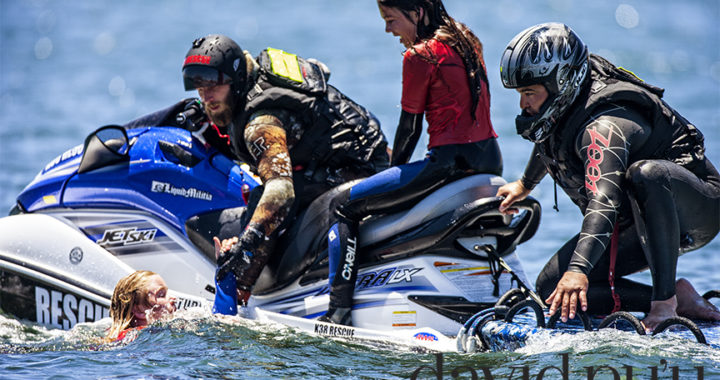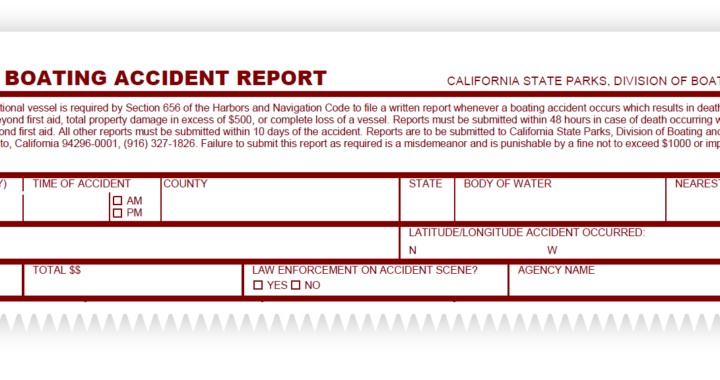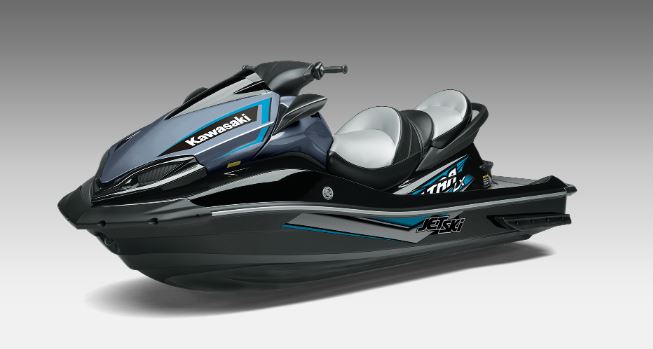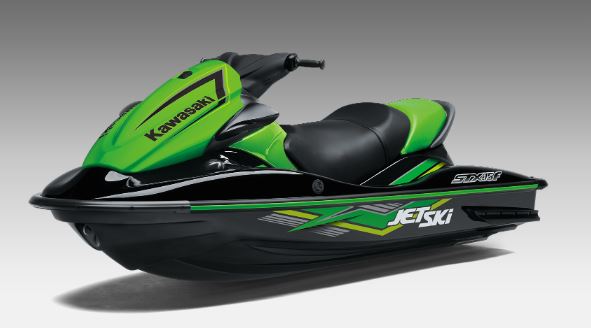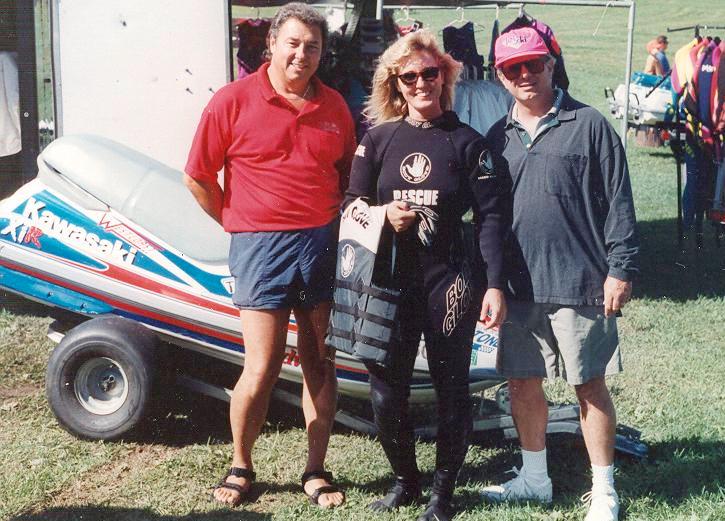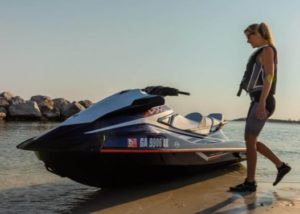Keep Thinking-Keep Moving
Flood Rescue using Personal Water Craft (PWC)
Oftentimes people will be recovered by citizens who own a PWC during flood events. Why is that?
Because most often in widespread disasters we are on our own and we help one another. There may not be organized rescue for a few days.
These images below are from Japan in November 2018 during severe flooding the nation experienced. It's not the first time Japanese have used Personal Water Craft for evacuations. During the Tohoku tsunami of 3.11.2011 Mr. Imazaki rescued over 100 persons in extremely dangerous freezing conditions at night.
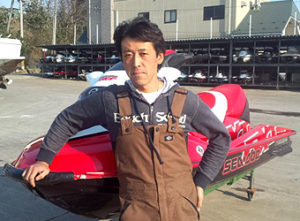
Masayuki Imazaki
Wake of Fame Inductee: Phoenix Award
The 2011 Tōhoku earthquake and tsunami PWC Rescues (東日本大震災, Higashi Nihon Daishinsai)
PWC Operator: Mr. Imazaki, 40 years of age, Miyagi Prefecture, Japan
Owner: Higashi Nippon Marina – PWC Dealer ‘Marine Mechanic’
They represent our 'Everyday Heroes' conducting rescues of their neighbors. This is an experience occurring around the world as floods are the number one reason people drown worldwide, and a Personal Water Craft is one of many small craft that assist during the critical and initial food stage.
When you look at this images study them. Learn from them. Try to place yourself on that roof, or on that shoreline.
What do you need to know if you are in a flood and a person brings a Personal Water Craft (PWC) to you to evacuate from?
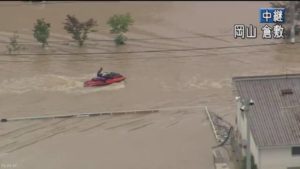
Watch out for wakes and the water jet pump
This is not training per-se, but an awareness article, something to think about. You could possibly apply this to other vessels as well.
This is a problem for us, having this kind of discussion is rarely a topic of anyone’s top ten list but we have to go here. K38 wishes that you adopt your own 'Safety Behavior' for yourself and your loved ones by being educated in advance of water disaster such as flood, earthquake-tsunami or storm surge.
EDUCATION SAVES LIVES
Did you know we host along with the Rescue Water Craft Association a Disaster Preparedness Education Group on Facebook?
Here is a link to the group, you may be interested in the outstanding educational editorial posted, visit the UNITS section: Disaster Preparedness Education Group
I am going to share with your potential issues or concerns from the perspective of an evacuee.
I’m not going to share with you the thousands of successful flood rescue recoveries conducted by citizens who have no water rescue training. They may not have professional training but they are doing great work and we are very proud of their efforts!
These are very good craft to use because of their shallow draft, which means they can operate in shallow waters. As long as there is no underwater hazards, these are great power boats for confined spaces.
They can also navigate in close or confined quarters (tight spaces). They are a great ‘point of contact’ craft. However debris can be a problem as well as strong currents, or capsizing due to lack of effective balance.
I would encourage you first to ask of the Personal Water Craft operator who is responding to your situation effective questions about how you will be transported and what to expect in case of an emergency. Make a plan first!
Remember this boat does not have a lot of room for bringing on a lot of personal items. Those would be best stowed in a towed vessel astern (behind) the Personal Water Craft if there is one, use it.
You probably will not be dry, meaning that it could be raining, your feet will get wet (pants), and you will experience spray from moving forward. You must consider the wind chill effect as well when underway, you may find yourself colder than when you started.
You can drop things and lose them in the water as well, so hold onto and secure your personal items.
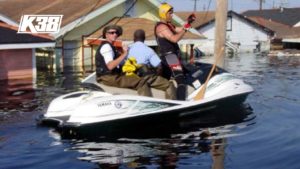
Be careful of electrical lines
Be exceptionally aware of downed utility or power lines, you do not want to experience shock or electrical burns. Be careful of your surroundings and what you touch.
It may be difficult to hear, so you may have to talk loudly or yell to communicate.
TRANSPORT WEIGHT
There are probably 2 types of Personal Water Craft that citizens will use:
1. Sport - Capacity: 1 to 2 persons on board
2. Runabout - Capacity: 1 to 3 persons on board
*. Runabouts can also have a Rescue Board attached to the stern if its a volunteer Search and Rescue Group or public safety agency, oftentimes these are the color yellow but not always.
Both of these Personal Water Craft have what is called 'weight load limits'. These are set by the weight on board and can be somewhat rated by adding together the total human weight but not to exceed it for calm conditions. Obviously the more stable craft will be a three-seater type craft we call a 'Runabout'.
You can tell this by the way the seating looks on the Personal Water Craft. Do you see that three people can sit down?
How do you hold on? You can hold onto the waist of the operator in front of you, or onto a strap on the back of their lifejacket. But do not tug them, they can lose their balance.
Some models have a seat strap that goes across the front seat area.
Some models have hand held finger grasp imprints along the plastic that is the re-boarding handle. See if you can identify any of these areas to use for stabilizing your position on the craft.
Your feet should remain in the footwell areas while you are facing forward in a seated position. Do not stand up underway! Falls overboard can occur.
When re-boarding be mindful that some of these craft do not have a neutral position but will be in idle moving forward from 2 to 4 miles per hour.
Some of these models may have a retractable re-boarding step below the molding on the deck area, near where the directional steering nozzle is at the back of the craft below the waterline. You can see if there is one or ask the operator, you can feel for it and pull it downward to get your knee onto it, but be mindful it can retract back into its resting position when released.
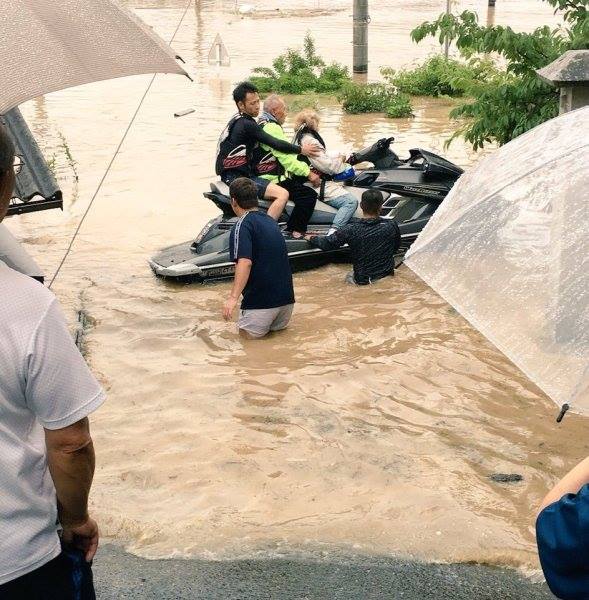
Use due caution when loading on a Personal Water Craft (PWC)
Moving pets is a different topic altogether, use common sense and be careful!
Sometimes you will see a rescue board (TAD-Towable Aquaplane Device), that is a flat device that is on the stern of the craft to the waterline. It is secured with 3 tie downs to the stern (back) of the Personal Water Craft. You may be asked to lay flat, hold onto the front handles and watch out for spray in your face.
You can expect to get wet and you will have water wash over the rescue board and it may be spraying in your face, so we advise you to be cautious of this during flood events. (Again we prefer to not to use a rescue board in flood stages professionally, except for small livestock and pets).
It is best if you do not stay near the waterline, because of debris, contaminants, cold, and fixed objects underwater. It is better if you can be up on the rear seat behind the Personal Water Craft (PWC) Operator. This means that the craft will be less stable with a higher center of gravity from body positioning however. The rescue board can be used as a ramp to help guide you towards the seat.
RESCUE BOARD POSITIONS
We really do not support the use of a TAD (Rescue Board in Floods) for transporting humans. However we know from video evidence people are using them. Not every flood location and water inundation is the same, proceed with due caution. Be aware of the risks and hazards. They can be a serious entrapment issue. We do not like to see people being dragged at the waterline, with their lower legs in the water. They can strike submerged debris or have foot entrapment or loss of footwear.
TAD handles can catch, and become an entrapment issue. If moving in current with weight on board, the board can fold and force people into the water again. So, its not recommended in fact we strongly suggest to not use a TAD unless working with small livestock for loading. TAD's may have to be destroyed if used in flood rescue work, keep that in mind.
However, for those who still continue onward here are some suggestions for both survivors, crew and coxswains:
1. Kneeling on the Rescue Board
2. Laying Face Down on the Rescue Board
Oftentimes people sit upright on a rescue board. This is less centered balance, especially if you are near the back of or the end of the board. Keep your body forward and place a hand on the re-boarding handle behind the back seat to steady yourself.
If you have an operator who applies sudden throttle to the helm, you may experience a sharp 'lurch' forward or to the sides, hold on tight as this can set you off balance and back into the water. Take your safety seriously when using a rescue board, you do not want to fall backwards. Be mindful of hair or loose clothing wrapping on the handles.
The Rescue Board can slip below the surface at the midpoint, but it is connected to the stern cleat of the Personal Water Craft (PWC). This makes it a bit awkward to board until you get closer towards the back of the PWC, then the board will rise towards the surface but that back end will still be below the surface as it is dragged forward.
Think of the Rescue Board as two distinct halves. The strongest point for you is closer to the back of the Personal Water Craft. No matter what make sure your pelvis is above the back of the rescue board and not dragging in the water.
Also you may need to coax and assist others with boarding, so pay attention to additional weight changes.
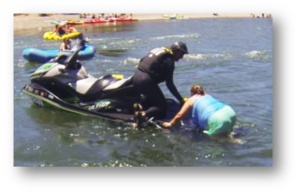
Rescue Board
You can also hold your legs up from the knees when laying flat as they can trail in the jet thrust and pull your shoes off, especially if you have loose fitting shoes. Stay centered on the rescue board and hold on to the top two forward handles you will be looking at.
Do not hold onto the center line attached to the Personal Water Craft. Do not hold onto the re-boarding handle if you are laying face down on the board. Simply hold on with both hands, keep a watch and stay alert for the water conditions underway.
Watch where you place your fingers, you don't want them to get pinned, pinched or smashed especially if you are wearing rings on your fingers, remember the Rescue Board pivots and moves, this means you may lose your grip or find that you are not holding onto a safe area, think about where your hands are and reconsider positioning.
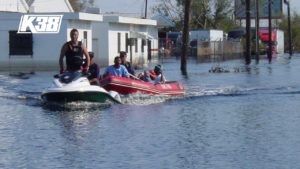
Towing a boat with Survivors behind a Personal Water Craft
Sometimes a rescue board is not used for transporting survivors but a boat is being towed behind it where people are placed. The same principles apply, set your body position in a stable part of the towed boat and find a seated position and observe for safety issues ahead while underway. Keep a watch on the boat you are on, look for any water pooling in the bottom by your feet or how high the water is to the side of the boat.
Oftentimes boats are overloaded due to the emergency and not having effective training as volunteers. Question the safety and ask the operator to make a second trip if you believe its unsafe to continue. Remember, you can communicate your concerns!
SITUATIONAL AWARENESS
It is desirable if the Personal Water Craft operator maintains a level, steady and stable PWC for you while maneuvering to a safe landing, but this may not be the case with untrained volunteers. You may find yourself back in the water in a worse situation than you were in, so think along the route about the hazards, trust your instinct!
You may notice depending upon the currents and speed of the Personal Water Craft some shifting of the towed boat taking place.
Always maintain a watch! You may find that you have to help out sometime.
It is most important to realize when the PWC begins to slow down that you need to start counterbalancing, as the stern wake catches up the PWC can start to roll slightly. Usually the PWC flips because the operator is unaware of this action as well as passengers. You may have to conduct slight counter balance measures to assist.
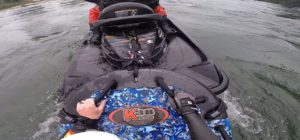
Two Persons laying flat, side by side, holding forward 2 handles
The most important thing for you is when the Personal Water Craft stops. How to get off? Wait for the Operator to bring the Personal Water Craft to a complete stop first. Observe what is ahead of you and start to prepare for your exit.
Its easier to get off by climbing off the back, from the seat. It is the most stable part of the craft. If you exit from the right (starboard side) or the left (port side) you will discover that the Personal Water Craft will pitch or roll off its centerline which is the most stable part of the craft. If you have been sitting on the seat you will notice this.
Forward propulsion stabilizes the PWC, so when it is stopped you can expect increased motion from the craft, counter balance.
Be careful stepping off! You don't know what you are stepping onto, make sure your have good foot contact so you don't roll your ankle in soft mud or dirt or get tripped on debris. Plant one foot at a time and maintain your balance during each step.
Take your time and go slow. Don't be nervous, focus on your surroundings. You don’t know what you will be stepping on, so get a firm foot down first. Don't let your ankle roll or jump or dive off. Remember the Personal Water Craft moves a lot, so prepare yourself for that, its a very small craft.
Never lock your knees or arms when riding, unless you have an injury.
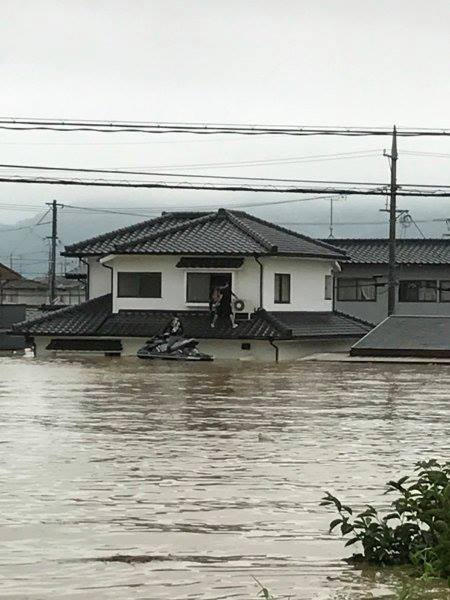
Loading from a roof line can be dangerous, slow down and take your time!
Safety is a Behavior
If you have the ability to put on a lifejacket that is even better! (Or have some type of flotation with you if you are not a strong swimmer). Do so immediately and properly secure all the buckles for a good fit. If you have children with you take care of them first.
Remember an adult lifejacket may not be the best measure for small children, they can slip out of them due to inadequate sizing! Let the children know verbally what is happening so they are not scared, give them key information to help them deal with the situation and tell them if they fall overboard to go into a 'floating position' or to swim towards shore, or if the PWC capsizes to 'stay with the PWC'.
If you have brought a small pet with you, be mindful of their behavior. They may be distressed and want to bite at others. Make sure you have secured them with a collar, leash, muzzle or a very firm grip. Remember, pets are protective and may not respond to people helping them positively especially a uniformed person.
If you are bringing any electronics such as a smart phone, be mindful this is a wet ride and items easily fall overboard or out of pockets and you will get wet or lose them!
If you have been a witness to a drowning or lost a loved one, pet or livestock, you will have to hold on a little longer till you get to a safe area. It will be important for you to seek help and to talk about the experience at some point. Evacuations are a long process of loss to many degrees.
At this critical time, 'Life and Safety' are most critical and should be your primary concerns.
Once safe, everything else can be dealt with, but first its imperative to get you out of a risk zone and to a safe zone.
EMERGENCY
If you experience a problem underway, such as the water jet pump being fouled with debris, or the PWC capsizes or you fall off the PWC, you can do something to help yourself and others. But first discuss it before your board a vessel!
If the Personal Water Craft capsizes remain calm! Tell yourself not to panic or be afraid. Especially if you do not have a fastened lifejacket. What you do next is vital.
Since you have been observing for hazards you already know where the currents are going and any downstream or upstream or surrounding hazards, you may have to start swimming away from objects if you are going to drift into them.
These may be called strainers and they can be deadly. A strainer is a fixed object that water can pass through but objects get pinned against them.
If you are not taking care of small children or pets, immediately when you surface roll onto your back and float face upward to the sky, and relax and breathe.
Get control of your thoughts and take a look around for safe landings or objects to grab onto. You may have to help the Personal Water Craft operator to right their capsized PWC. It's not hard to do! The sooner the PWC gets righted the sooner you will reach safety.
Re-boarding from the water line can be exhausting. Take it slow and counter balance. If you focus it will be easier to determine what needs to be done and you will do great!
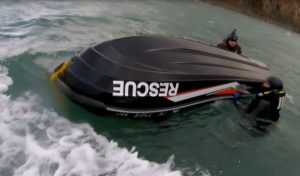
Righting a Capsized Boat
1. You will see an intake with metal bars on it, that's the water intake screen. Place your fingers on the outside of the bars and start to pull the PWC towards you. You can also place a knee up on the edge of the capsized PWC, and give it a few tugs!
2. Once the PWC starts to roll over, it will settle in an upright position. For four stroke engines we wait 10 seconds till we restart, but if the PWC is upside for over two minutes it becomes more difficult and the engine compartment can start seeping water making it heavier than usual.
3. The Engine Cut Off Switch will be needed to re-start the craft, the operator should have this, but they can break or float away. If using a Kawasaki Ultra model, open the glove box below the helm and remove the immobilizer key and re-key it to start. You will hear a chirping sound.
4. Re-board the craft from the back stern deck, not the sides. Stabilize and take your time. Observe for hazards you may be floating towards.
You will need the engine cut off switch to restart the engine. If you are on a BRP Sea Doo the engine cut off switch on newer models is digitally coded, as are the Kawasaki Ultra models immobilizer key. Keep all electronics away from these!
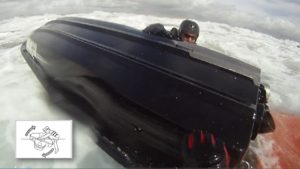
Follow the diagram on the stern of the PWC (If it has not been removed)
UITEMATE
If you find yourself in the water, a simple technique of floating will help you and others! Do not panic! Learn how to float on your back using the Uitemate technique from Japan.
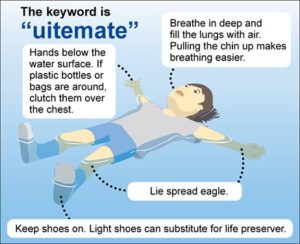
Uitemate
Japanese technique "uitemate" on preventing drowning
When you get closer to a landing area, start to think ahead of what you need to do and be mindful of. Allow the Personal Water Craft operator to complete their final maneuvering. Continue to counter balance.
You may find that your legs have gone to sleep in a strange position or the cold has caught up to you. Take your time moving and getting off the Personal Water Craft.
Be mindful of the soil or area your feet will make contact with. Do not dive. Do not jump! Place your feet down slowly and firmly. You do not want to roll an ankle or trip and fall into the water.
If you can and are physically able, assist others from disembarking.
If you have any open cuts or wounds, you may need to get them cleaned out from contact with the water.
Now its time to get ready for your next evacuation plan, a shelter or a staging area or counseling!
Hopefully you never have this experience but these are some of the items I would like you to be aware of so you don’t experience any fear, frustration or worry. Better to know something than to know nothing at all.
Thanks for your time! Ask any questions you may have!
Special thanks to our Everyday Heroes in these photos. I am sending all my best thoughts to the responders in Japan, please join me!
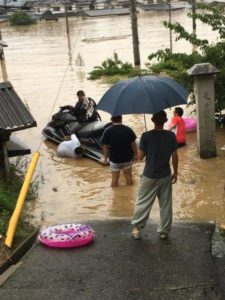
Special thanks to this blog post: http://netgeek.biz/archives/122152
_________________
Posted 11.25.2018
Have any questions? Join the Rescue Water Craft Association
and discover what your community is doing to modernize standards, safety and reduce liability!
Join the Rescue Water Craft Association
Content Creator: Shawn Alladio cares most about her community and the culture surrounding the safety of event service providers and Rescue Water Craft operators, working hard and dedicated towards protecting their reputation, distributing safety information and continuing to train these amazing individuals to the highest standards of care.
Use at your own risk. Please take a qualified Rescue Water Craft training course and maintain proper records and respect all the PWC, RWC, PPE, and gear OEM manufacturer warning labels and cautions.
